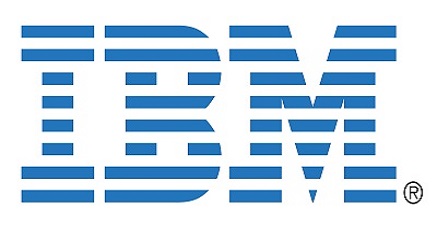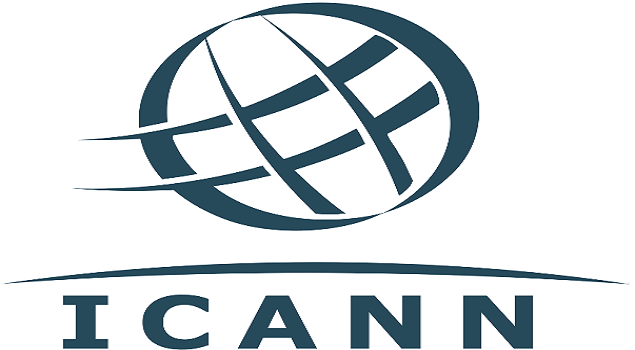E-Business
IBM Supports Mobile Economy with Z13 Mainframe Computer Launch

IBM, notable for its innovative capabilities, is combining a couple of odd computing with the new trends, following a new machine that combines the mainframe, the old workhorse, and the smartphone, launched on Wednesday.
Apparently, IBM designed the latest version of the mainframe with the smartphone in mind.
The new mainframe, the z13, has been engineered to cope with the huge volume of data and transactions generated by people using smartphones and tablets.
“This is a mainframe for the mobile digital economy,” said Tom Rosamilia, senior vice president in charge of IBM’s systems business, which includes mainframes. “It’s a computer for the bow wave of mobile transactions coming our way.”
IBM brings out a new mainframe about every three years, and the success of this one is critical to the company’s business.
Mainframes alone account for only about 3 percent of IBM’s sales.
But when mainframe-related software, services and storage are included, the business as a whole contributes 25 percent of IBM’s revenue and 35 percent of its operating profit, estimates A.M. Sacconaghi of Bernstein Research, as reported by Cyberoption.Net blog.
Over the years, IBM has done a good job of revamping the mainframe to handle new workloads.
Modern mainframes, for example, run a lot of open-source software, like the Linux operating system.
Today, though, IBM is in the midst of a transition challenge, it is investing to build large, growing businesses in new areas like cloud computing, big data analytics and mobile applications for corporations.
But those fields have not yet grown fast enough to make up for the erosion in some of its hardware, software and services offerings.
The mainframe is not a growth market for IBM.
But maintaining the mainframe franchise is a strategic imperative for IBM, giving it financial ballast and time as it pursues new opportunities.
“Ensuring the relevance of the mainframe, and with it deep ties into so many major corporate accounts, is crucial to IBM,” Sacconaghi said.
The new mainframe, Rosamilia said, has a host of technical improvements over its predecessor, including three times the memory, faster processing and greater data-handling capability.
IBM spent $1 billion to develop the z13, and that research generated 500 new patents, including some for encryption intended to improve the security of mobile computing.
Much of the new technology, Rosamilia added, is designed for real-time analysis in business. For example, he said, the mainframe system can allow automated fraud prevention while a purchase is being made on a smartphone.
Another example, he said, would be providing shoppers with personalized offers while they are in a store, by tracking their locations and tapping data on their preferences, mainly from their previous buying patterns at that retailer.
These real-time applications, according to Donna Dillenberger, a distinguished engineer at IBM’s Watson lab, can be done in a mainframe environment.
They are not yet possible on clusters of smaller, industry-standard computers, she said. But there are several open-source software projects, like Apache Spark, that focus on real-time data processing across large numbers of computers.
Mobile computing is certainly accelerating the data-handling and transaction-processing challenges for businesses of all kinds.
The volume of purchases made on smartphones and tablets in the United States, estimated at $114 billion last year, is projected to more than double to $293 billion by 2018, according to Forrester Research.
That kind of growth trajectory in America and elsewhere is largely attributable to the popularity and steadily improving capabilities of mobile devices.
But the simplicity of a tap-and-swipe mobile computer also contributes to the complexity of the computing tasks a user never sees when, for example, making an online purchase.
A single consumer action can set off four to 100 computing transactions — with information sent securely — like confirming an identity or authenticating a credit card.
Howard Rubin, an independent analyst, calls this the “starburst effect.” The advance of mobile computing, he noted, leads to “a surge of back-end transactions.”
In developing the z13, IBM worked with 60 companies and government agencies, mainly longtime mainframe customers.
But IBM won a convert in Ronald J. Peri, chief executive of Radixx International. Radixx, based in Orlando, Fla., runs the computerized reservation systems for 40 airlines, mostly smaller and midsize carriers outside the United States.
In the late 1980s, while working for an insurance company, Mr. Peri was an early advocate of moving off mainframes and onto networks of personal computers. An article from that time in The Wall Street Journal cited Mr. Peri as being in “the vanguard of a revolution” against the high-priced tyranny of mainframe computing.
Today Mr. Peri is shifting the back-end computing engine in the Radixx data center from a cluster of industry-standard servers to a new c.
After testing out the mainframe, he has been impressed by its performance, security and even cost. He estimates the total cost of ownership including hardware, software and labor will be 50 percent less with a mainframe than on his “sprawling server farm,” given the growing complexity of managing hardware and software from several suppliers.
“We kind of rediscovered the mainframe,” Mr. Peri said.
E-Business
Farmers to Get Identity Card for Loans, Inputs

The federal government, in collaboration with the International Fund for Agricultural Development (IFAD), is building a digital registrar that will identify farmers, their farmlands, type of soil and the crops they grow for targeted services.

The information and the National Identification Number (NIN) will be integrated into a multipurpose identity card that farmers can use to access financial services, inputs and other forms of government assistance.
The digitisation is expected to harmonise farmers’ data across all the 36 states and the Federal Capital Territory.
Speaking at the national launch of the Policy Dialogue Initiative on the National Digital Farmers Registry (NDFR) recently in Abuja, Dr Marcus Ogunbiyi, permanent secretary, Federal Ministry of Agriculture and Food Security (FMAFS), said the new system would address the issue of portfolio farmers, whom he described as “farmers who have no farm.”
“We are going to register farmers and their farms. Not only that, farmers and the type of crop they grow, farmers and the locality they are, the type of soil they have on their farms. There is no farm that will not have a farmer. But there are many farmers who do not have farms. This is an encompassing package.
“When we register these farmers, we are going to provide a physical and digital card for them. With the card, many things can be done by the farmers. It can be used as a means of identification, an asset to some gateway – just anything. It is going to have a handshake with the database of the country, such that with that particular card, the farmer can enter any place and get things done. He or she can redeem inputs and even get a loan, depending on the financial entity,” Ogunbiyi explained.
He said that to accomplish this, the Federal Ministry of Agriculture and Food Security has taken decisive steps to transform their approach to farmer data management, adding, “Chief among these is our strategic partnership with the National Identity Management Commission (NIMC) to implement a far-reaching farmer registration and database project. At the heart of this initiative is the integration of the NIN, which ensures that every Nigerian farmer is uniquely identified and seamlessly integrated into a national agricultural system.”
Mrs Dede Ahoefa Ekoue, country director/representative of the IFAD in Nigeria, said the United Nations (UN) organisation was proud to be part of the initiative on the National Digital Farmer Registry in Nigeria.
“Our role is to convene all the partners, development partners from the public sector, private sector and the international community to put our resources together to support the effort of the government in establishing and enabling a digital farmer registry for the country,” she said.
Mrs Ekoue said that although there were previous efforts to have a national database of farmers, it had the issues of fragmentation and sustainability.
“The government is now providing us with a sense of direction and matching orders to all the actors to work together. This is what we are doing today with several partners, including the African Development Bank, FAO, the World Bank, the EU, the Islamic Development Bank and UK. Also, what is very key is farmers’ organisations because it is about them, it is for them, it must be with them,” she added.
The country director said the IFAD was happy to bring together the private sector and different ministries, departments and agencies, adding, “It will be a game changer for having a strong, updated and sustainable national digital farmer registry.”
Dr Lekan Tobe, the country director of Heifer International in Nigeria, in his remarks at the official launch of the Policy Dialogue Initiative on the National Digital Farmer Registry, emphasised the critical role of partnership and data in transforming Nigeria’s agricultural sector.
He said that this initiative, born from recommendations of previous policy dialogues organised in collaboration with the federal government, aimed to scale up innovative digital technology to enhance food systems across the country.
E-Business
Dyna.Ai Launches Operations in Nigeria

Dyna.Ai, a global leader in AI-as-a-Service (AIaaS), has launched its operations in Nigeria with an exclusive closed-door ‘Nigeria Dyna Day’ event in Lagos, which saw the introduction and orientation of its suite of AI-powered products and solutions to Nigeria’s emerging financial ecosystem.

The event, tagged ‘Nigeria Dyna Day’ and themed “AI Unleashed: Revolutionising Nigeria’s Financial Future,” brought together leading voices from the country’s AI, financial, fintech, telecom, and other key sectors, including representatives from government agencies and major enterprises.
In his opening remarks, Tomas Skoumal, chairman and co-president of Dyna.Ai, emphasized the strategic importance of Nigeria and the broader African market, stating, “For us, it makes sense to start in Nigeria.
There is no bigger country in Africa—this is where the momentum is.” He noted that Africa is no longer just “the future,” but is actively transforming today, driven by rapid digitalization and fintech innovation.
“This is the perfect time to be here,” he added, highlighting that Dyna.Ai sees technology as a vital bridge to financial inclusion and long-term growth across the region.
Skoumal introduced Dyna.Ai’s advanced Agentic AI solutions, including its proprietary Agent Studio and industry-specific language models, designed to power intelligent automation across customer service, marketing, collections, HR and more.
He also underscored the company’s long-term ambition to invest in local talent, stating, “We’re not just here to sell a product—we’re here to build infrastructure, create local jobs, and scale innovation from Nigeria to the rest of Africa.”
Dyna.Ai also showcased its advanced AI technologies at the event, including AvatarGPT, an AI digital human delivering interactive experiences; VoiceGPT, a voice agent featuring authentic local accents for seamless communication in Yoruba, Hausa, and Igbo; along with live demonstrations showing how these innovations empower customer engagement and employee experience.
Delivering the keynote address at the event, Tokoni Peter Igoin, Special Assistant to the President on ICT Development and Digital Innovation, underscored the Federal Government’s vision for a secure and forward-thinking digital ecosystem.
“The government of the Federal Republic of Nigeria, under the visionary leadership of His Excellency, President Bola Ahmed Tinubu, is fully committed to responsible innovation. Our approach to AI and financial technology is rooted in a positive framework. It encourages creativity while ensuring transparency, data protection, and digital security”, he said
Also in his remarks, Olatunbosun Alake, Lagos State Commissioner of Innovation, Science and Technology, gave insights from the government/regulatory perspective.
He announced that the Lagos State government is also taking steps towards the wide adoption and regulation of artificial intelligence in the state with the planned release of the first AI guidelines for the deployment and management of AI in the coming weeks.
E-Business
Survey Reveals Marketing Leaders See Strong Potential in gTLDS Despite Knowledge Gap

A new global survey from the Internet Corporation for Assigned Names and Numbers (ICANN) reveals that 52% of marketing leaders believe generic top-level domains (gTLDs – the three characters or more that come after the dot in a URL) have strong potential for enhancing brand presence online; however, a knowledge gap is preventing many brands from taking advantage of the opportunities that a gTLD can bring.

The research surveyed over 2,000 marketing leaders across eight countries (Brazil, China, India, Mexico, Nigeria, South Africa, U.K., and U.S.) with the purpose of creating a picture of the evolving digital marketing landscape and understanding the levels of awareness around gTLDs.
It comes as ICANN prepares to open the next application window for new gTLDs in April 2026 the New gTLD Program: Next Round – the first opportunity in more than a decade for organizations to apply to operate their own gTLD.
Top-level domains are the letters found at the end of an Internet address (with gTLDs including .charity, .menu, .paris and .ceo). Brands can apply to run their own gTLD as a way to indicate the purpose of their organization or to clearly mark a website as being related to their brand.
The research shows that increasing brand awareness and visibility is the top priority for marketing leaders (54%) and that over half believe that gTLDs have strong potential for enhancing brand presence online.
However, the research also shows that almost a third (32%) of marketing leaders surveyed are unfamiliar with gTLDs, which suggests that operating a new gTLD may be a strategic opportunity that many organizations are currently overlooking.
Key findings from the research include:
- After defining a gTLD, 92% of marketing leaders responded that they could see the potential benefits to gTLDs, with enhanced brand differentiation (46%), improved customer trust (45%), better control over online presence (44%), and improved SEO (44%) topping the list.
- 19% of marketing leaders work for organizations that have previously applied for a gTLD.
- Cost concerns (31%), knowledge gaps (27%), and insufficient resources (24%) were identified as the main barriers to application.
- The research revealed notable regional variations, with Nigerian (74%) and Indian (61%) marketing leaders showing the strongest belief in gTLDs’ potential for branding and online presence. In contrast, marketers in China expressed more mixed views, with 50% seeing strong potential but 49% considering gTLDs an unnecessary investment with unclear Return On Investment.
The findings come at a time when marketing leaders are facing significant challenges in standing out from competitors (53%), attracting and engaging the right audience (52%), and keeping pace with digital trends (47%).
A new gTLD can be an innovative tool for commerce and communication. They allow businesses in specific countries, sectors, or niche markets to create an exclusive, descriptive, and memorable label on the Internet.
An entity operating a gTLD can provide its users and customers with an extra measure of confidence in its security and legitimacy online. This can be valuable in today’s environment, where users often don’t know whether they can trust the source on the Internet.
Theresa Swinehart, SVP, Global Domains & Strategy said: “The New gTLD Program: Next Round presents an opportunity for businesses, communities, governments, and others to apply to operate their own secure space online, tailored to fit their organization, community, culture, language, and customer interests.
Now is also the moment for brands to consider applying for a gTLD, and this research tells us there is still a lack of awareness. ICANN can help provide information and raise awareness of the Next Round and the opportunity it presents for global communities, organizations, and businesses, including brands.”
To help address the knowledge gap, ICANN is developing resources to help organizations understand the application process and potential opportunities for gTLDs ahead of the 2026 application window. ICANN also offers the Applicant Support Program (ASP), which provides financial and non-financial assistance to eligible applicants.

 General News3 days ago
General News3 days agoUche Uzoebo, SANEF CEO Makes Case for More Financial Inclusion Strategies Targeting Women

 Broadcasting3 days ago
Broadcasting3 days agoACAMB Champions Bankers Wellness with Aerobics Fitness Session

 General News3 days ago
General News3 days agoHydrogen, Lagos State Touch Thousands of Business Owners with “Healthy Heart, Healthy Business” Outreach

 News3 days ago
News3 days agoUK Minister for Africa Visits Nigeria to Deepen Strategic Partnership

 E-Business3 days ago
E-Business3 days agoSurvey Reveals Marketing Leaders See Strong Potential in gTLDS Despite Knowledge Gap

 News19 hours ago
News19 hours agoFirst Asset Management Receives 2024 Fund Manager Award

 News19 hours ago
News19 hours agoSERAP Sues NNPC over Alleged Missing ₦500Bn, Seeks Accountability

 General News19 hours ago
General News19 hours agoNigeria Relaunches National Talent Export Programme to Unlock $1 Trillion Global Outsourcing Market















